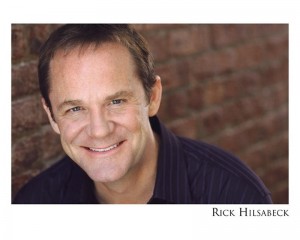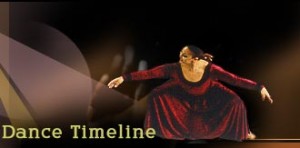Today we have a special feature–a guest, who is going to share some tips on teaching children dance. Stacey Pepper Schwartz has been featured in 4dancers series 10 Questions With…, and she is quite the breath of fresh air. I have noticed that most people who work with children in dance have seemingly boundless energy and enthusiasm, and Stacey is no exception. I asked her 5 questions about teaching, and she had some wonderful things to share…
1. When it comes to teaching children, what can you do to help instill a love of dance?
If you instill in a child that she is in charge or her body, that she can make choices with how she wants to move, and how she wants to express herself, you are in essence fostering a life that will be open to the dance within herself and herself within the dance.
We are not just beings with muscles and bones. We can choose how we want to move our muscles, which then moves our bones. When children start to master this concept of choice, they gain self-esteem and a sense of self.
You can also instill a love of dance by having children dance with each other and for each other. Many children who have difficulty with speech can be on the same playing field when it comes to communicating through dance. Even children with coordination or spatial issues can move freely with a group because there is no right or wrong way of expressing yourself. The beauty of dance is that you can communicate with one simple gesture or your entire body. You can dance with another person, a group or be free to take the space by yourself. Both the mover and the audience share the experience. They share common ground.
When we have a joyful or meaningful experience we tend to want to do it again. When you teach remember the joy, remember the importance of body ownership, expression and in sharing the experience with others.
2. What are a few tips for keeping order in a class full of young children?
My tip is to have a bag of tricks. Not one thing will work all the time and different children need different ways of being guided.
- Be consistent, be kind and be deliberate. Don’t ask “Can everyone come to the center of the room?” If you ask a question, be prepared for various answers, like “no!” Instead give the children a task to complete. “Everyone come to the center of the room in low level” or “choose a traveling step to the center of the room and end in a pointy shape.”
- When they complete an activity acknowledge a job well done and be specific. “I like the way everyone found different ways of moving in low level. I saw children moving on their knees, tummies and backs.” Make sure not to use praise words without backing it up or the words become meaningless. When I was student teaching I used to say “great” all the time. The teacher I was working with pointed it out to me. She told me that the word lost its value because I said it so much and I wasn’t being specific about what was so great. I great lesson to learn!
- When a child is having difficulty listening I will ask them to be my partner. This way I can talk quietly to the child and give them cues without having to attract attention to the child and the behavior.
- Have children earn activities. Give them a goal to work towards, like a round of “free- dance” or stickers. Make sure the goal is obtainable or the children can feel defeated. Feeling proud of a job well done is wonderful motivation to do their best!
3. How do you deal with behavior outbursts in a dance class setting?
I was the director of an arts camp and I went in to observe the dance class. I asked a child to move to a different spot in the room and she started screaming at me. I had her sit and watch class while I called her mother. Her mother told me she was dealing with anger management issues. This was a great lesson for me.
Make sure you are partners with the parents or teachers. Having information about any special circumstances will keep you and the children safe and will enable you to have a productive teaching environment.
After talking with the mother, I learned techniques to be helpful to this child and we did not have any other problems. Information will not always be available to you but I feel the more you are aware of specific issues or needs the better equipped you can be.
When I worked in a studio, after class, I made sure to tell each parent one thing their child was working on, something they did well or achieved. I found this very helpful in not only having a successful class for the child but I gained the support of the parents as well.
When I teach in schools, I always try to share my lesson with the teacher and ask if there are any ideas or concepts he or she would like me to work on. I try to model the classroom management style of the teacher to be consistent. I want to partner with the teacher, not only for educational purposes, but for disciplinary purposes as well.
Lastly, if I child is having a difficult time listening, following directions or is being disruptive, I will ask him or her to sit and join the class when ready. I have found this works very well because the child is not getting attention for the negative behavior. Most of the time, the child will join back in after a few minutes. Remember after you discipline a child to follow up with positive reinforcement to engage the child and give him or her attention for good behavior.
4. What was the best piece of teaching advice you ever heard?
By far the best advice I have ever received was accentuate the positive. When I was student teaching, I broke the class into smaller groups to work on a movement activity. I was focusing on a group that was not listening and reprimanding them. The teacher I was working with pointed out to me that the children who were doing a good job were not getting any attention. She taught me that when I praised a group, it influenced the group that was not listening because they wanted attention as well. My class went smoother after this and I was actually accomplishing two things. I was providing positive feedback and was managing the behavior of the class!
Barbara Bashaw, a wonderful teacher I had when I attended Teachers College, Columbia University for my Maters in Dance Education, taught me to always be prepared to improvise. You might have a wonderful lesson prepared but the children might have had a fire drill before your class or if you are teaching in a studio maybe they had off from school that day. You can plan for the class but not for the energy the children will be bringing. You have to ultimately take your cues from the children. This was a hard lesson to learn for me, but an absolutely valuable one!
5. What is the one thing you would tell someone who is new to teaching children dance?
I would tell them they are the student as well. Make sure you are patient with yourself as well as your students. Give yourself permission to experiment, try new things and don’t be afraid to fail. I find I have to do a lesson a few times before I am happy with it. Don’t be afraid to repeat an idea or concept. Kids learn by repetition and so will you. Remember that everyday is a new day for you and the kids. Make sure you smile, laugh and know that you are giving a precious gift. You are teaching more than movement, you are teaching an avenue to experience life.
 Bio: Stacey is the Founder and Director of Leaping Legs Creative Movement Programs. The focus of Leaping Legs Creative Movement Programs is to help people regardless of age, experience or ability, become educated about their movement potential, develop kinesthetic awareness, and become more physically fit and healthy together as a family, and community.
Bio: Stacey is the Founder and Director of Leaping Legs Creative Movement Programs. The focus of Leaping Legs Creative Movement Programs is to help people regardless of age, experience or ability, become educated about their movement potential, develop kinesthetic awareness, and become more physically fit and healthy together as a family, and community.
Leaping Legs promotes its goal through the original Up Down & All Around DVD. Utilizing the elements of movement, the video entertains as it motivates kids and their families to exercise together using movement games, silly exercises and challenges. The DVD received Dr. Toy’s 100 Best Children’s Products 2009 Award and 10 Best Active Products 2009 Award. The DVD has also been featured in many magazines. In its August 2009 issue, Dance Teacher called the DVD “an essential tool for teaching the fundamentals of movement.”
Stacey received her BFA in dance performance at Montclair State University and her MA in dance education from Teachers College, Columbia University. She has taught as an artist in residency and guest artist in public and private schools for over twelve years.








